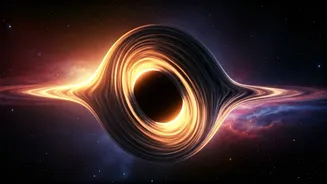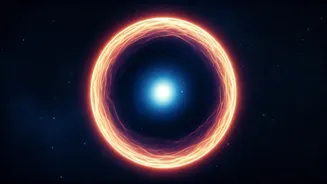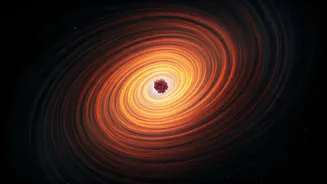Cosmic Clocks Explained
Pulsars, a unique kind of neutron star, spin with incredible regularity, emitting beams of radio waves that sweep across space like a lighthouse. Because
of their predictability, pulsars act as extraordinarily accurate cosmic clocks. These clocks are so precise that astronomers can measure tiny variations in the arrival times of their pulses. When a gravitational wave passes through the path between a pulsar and Earth, it causes a subtle stretching and squeezing of spacetime. This, in turn, subtly alters the timing of the pulsar's pulses, and allows scientists to detect the presence of the waves. NASA's FERMI is playing a significant role in this effort, as scientists actively search for the elusive gravitational wave background. The discovery of gravitational waves is significant, as it provides a new way to observe and understand the universe.
Black Hole Mergers Uncovered
Supermassive black holes, found at the centers of most galaxies, can merge when galaxies collide. These mergers are the most energetic events in the universe, creating powerful gravitational waves that ripple through spacetime. The detection of these waves is extremely difficult. Scientists use an array of pulsars, essentially forming a giant detector across the galaxy. As gravitational waves pass through, they subtly alter the time it takes for pulses from these pulsars to reach Earth. By analyzing the timing of these pulses, astronomers can infer the presence of gravitational waves, originating from the merger of supermassive black holes. This method enables scientists to study these mergers across vast cosmic distances. Discoveries in this area continue to reveal new information.
Hunting Gravitational Waves
NASA's FERMI is at the forefront of the search for the gravitational wave background. The gravitational wave background is a faint, ever-present hum of gravitational waves, created by the cumulative effect of many black hole mergers throughout the universe's history. Detecting this background is a key objective, which requires meticulous measurements of pulsar timing. The data collected by FERMI helps scientists analyze the subtle changes in pulsar signals and extract any evidence of gravitational waves. The search is crucial for verifying theoretical predictions and to reveal the prevalence and characteristics of black hole mergers. The project involves international collaborations to gather and analyze the necessary data, and it is a complex and painstaking effort.
Implications and Challenges
The research into gravitational waves from merging black holes has profound implications for our understanding of the universe. It provides an independent way to test Einstein’s theory of general relativity, particularly in extreme gravitational environments. Also, the study allows for a better understanding of how galaxies evolve. However, there are also substantial challenges. The signals are extremely faint, and scientists must account for various factors that can affect pulsar timing, such as interstellar gas and the Earth's movement. Furthermore, the analysis requires powerful computational resources and sophisticated data-processing techniques. Despite these challenges, ongoing research is continually refining detection methods and increasing the accuracy of measurements. Scientists are working constantly to improve their understanding of cosmic phenomena.
Future Discoveries Ahead
As technology advances and more pulsars are discovered, scientists expect to obtain even more detailed information about black hole mergers and gravitational waves. Space-based observatories and advanced ground-based telescopes are instrumental in gathering more data. These improvements should increase the precision with which they can detect gravitational waves. Future discoveries should shed light on the formation of black holes and the fundamental properties of the universe. The ongoing work will lead to a more comprehensive understanding of the cosmos, helping to rewrite our physics textbooks and inspire a new generation of scientists. The scientific community eagerly awaits the upcoming findings from this captivating project.












